![]()

|
Electric Ad Clock Company Clocks |
 |
![]()
The Electric Ad Clock company was located in Chicago. These are the clocks that have motorized ads in them. They are noisy, and the ad "cards" can be quite fragile. But they are some of the earliest clocks that included neon and advertising. Just too cool!
Note that there appears to be a related company, the National Specialty Sales Company in Brooklyn NY, that distributed "Neon Ad Clocks" as well.
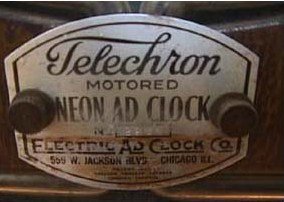 |
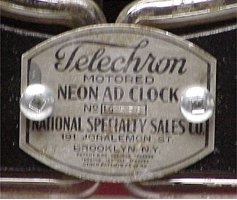 |
| This is a great old style of advertising clock, which is often referred to as a "Cathedral" clock. They have a drum in the lower "window" that displays six different advertisements. The drum is run off the clock motor through mechanical levers and gears. It rotates once every ten seconds. | |||
| Here's another fine example, this time in red neon. These clocks were very noisy, obviously meant to be displayed in a busy diner where noise wasn't a problem. | |||
| OK, these "Flipper" clocks are common. I've often seen these offered for sale as a "salesman's sample" with a travel case. Blues neon is the more common color. Sometimes the clock is on the right... | |||
| ...and sometimes the clock is on the left. Note that this one has a cover on the advertising side, so the flip cards would only show in the bottom of the advertising frame (and you would only need half of the advertising spaces filled). | |||
| Patents for Electric Ad Clocks | |||
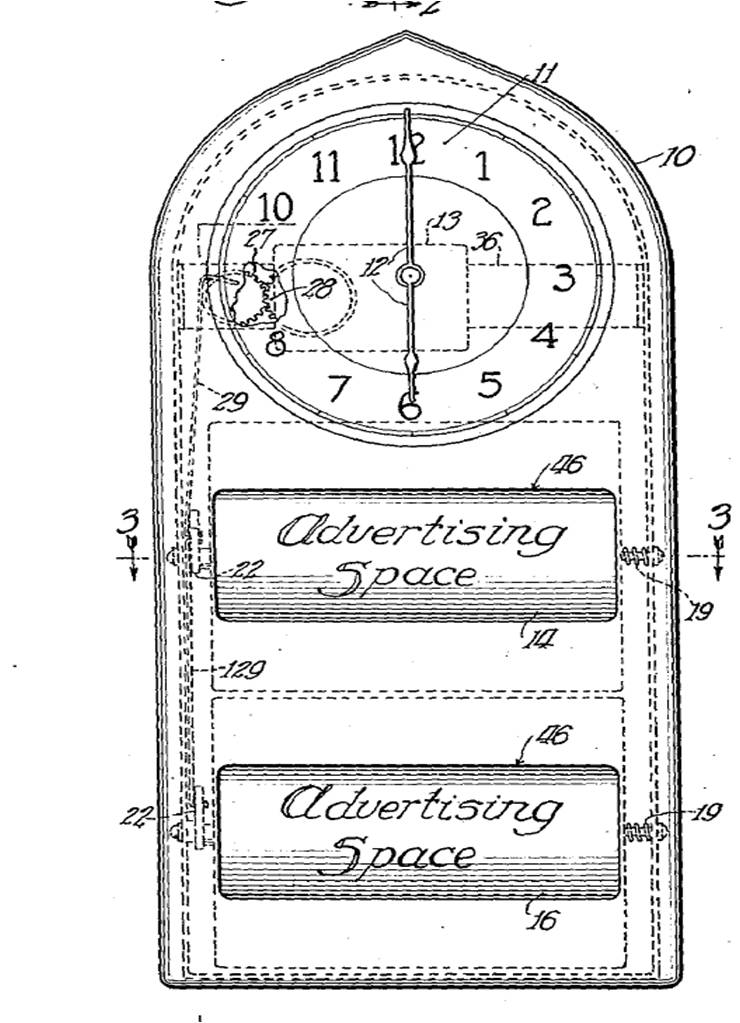 |
Beginning in 1931, George Willins filed patents on designs that ultimately were used in the Neon Ad Clocks. Number 1846928, issued in 1932, was for the general concept, but with two drums! Even more interesting is that another version in the patent drawings has the two drums mounted on vertical axes, side by side. These must have not made it past the prototype stage, because the remaining patents are for single-drum clocks. | ||
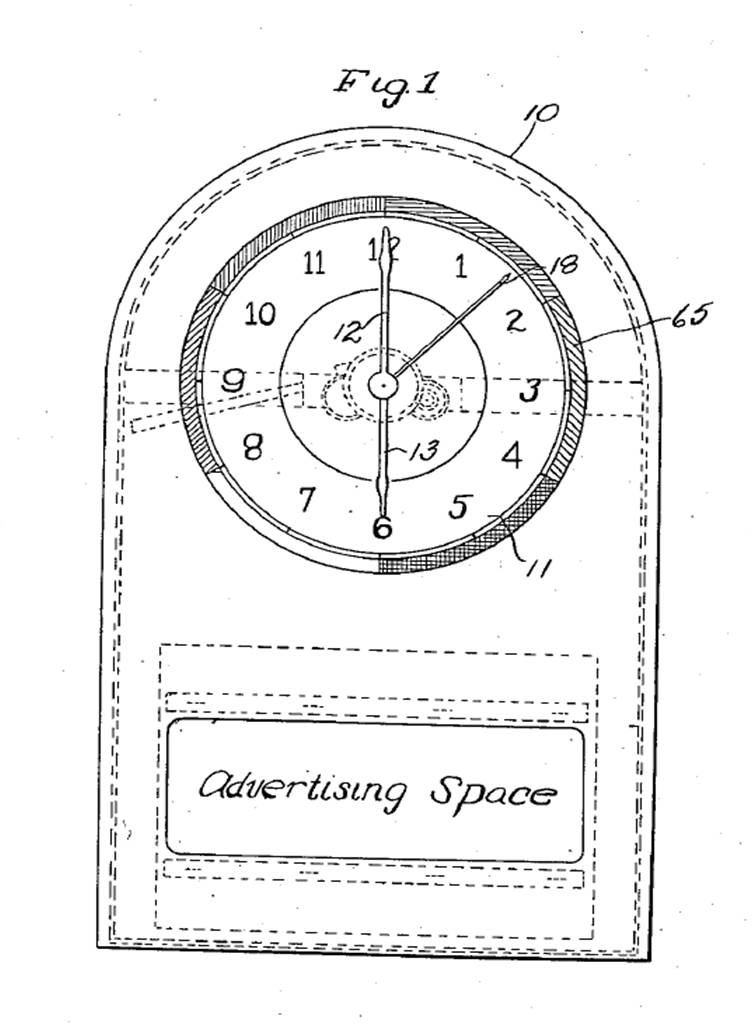 |
Number 1846929, also issued in 1932, was for improvements in the drum and drive mechanisms for the advertising drum. The intent is to reduce the amount of power needed to turn the drum, and to have the drive operate off the second hand gear. | ||
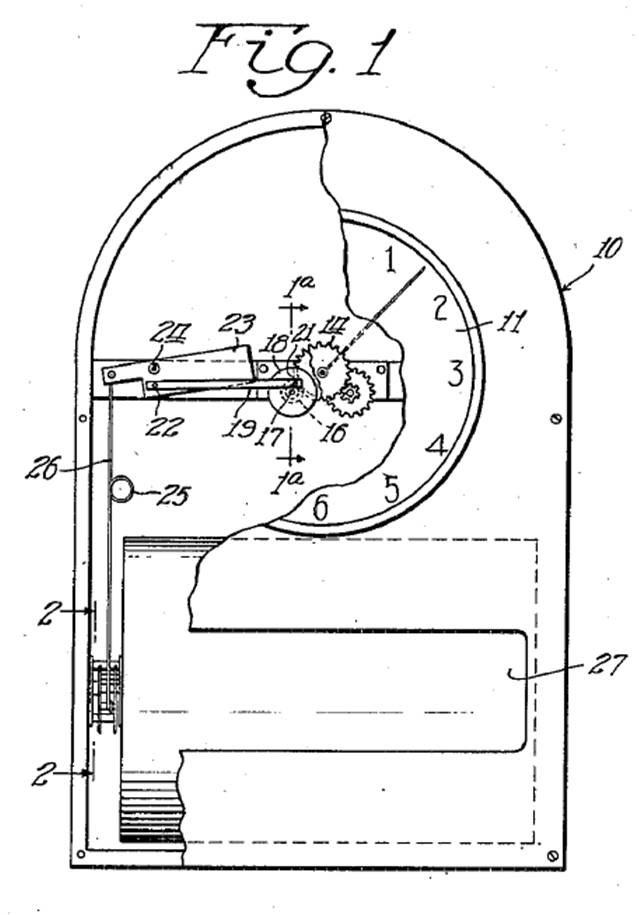 |
Number 1852869 issued in 1932 is a patent on an improved mechanism to further reduce the force necessary to turn the drum, and to reduce the back-shock to the drive motor when the drum stops turning (causing in the clock to lose time). This latter accomplish is by means of a single loop in the driving rod that absorbs this shock. I always wandered why that loop was there, and now I know! Seriously; I thought it was there to provide an easy way to adjust the throw of the drive mechanism. | ||
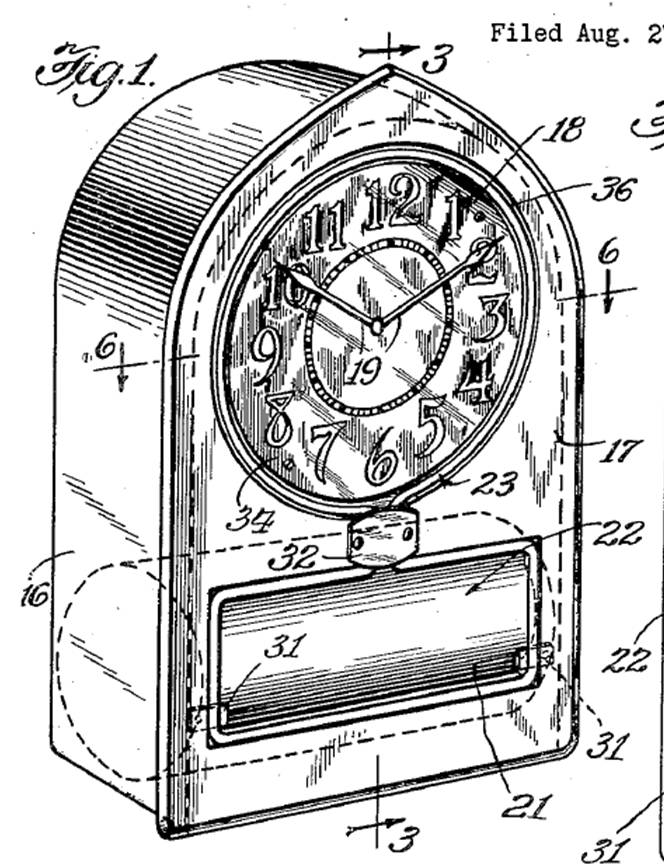 |
Patent number 1888366, issued in 1932, is a patent on the neon design that allows or stability while providing easy removal for clock maintenance. It also include improvements in the drum design. | ||
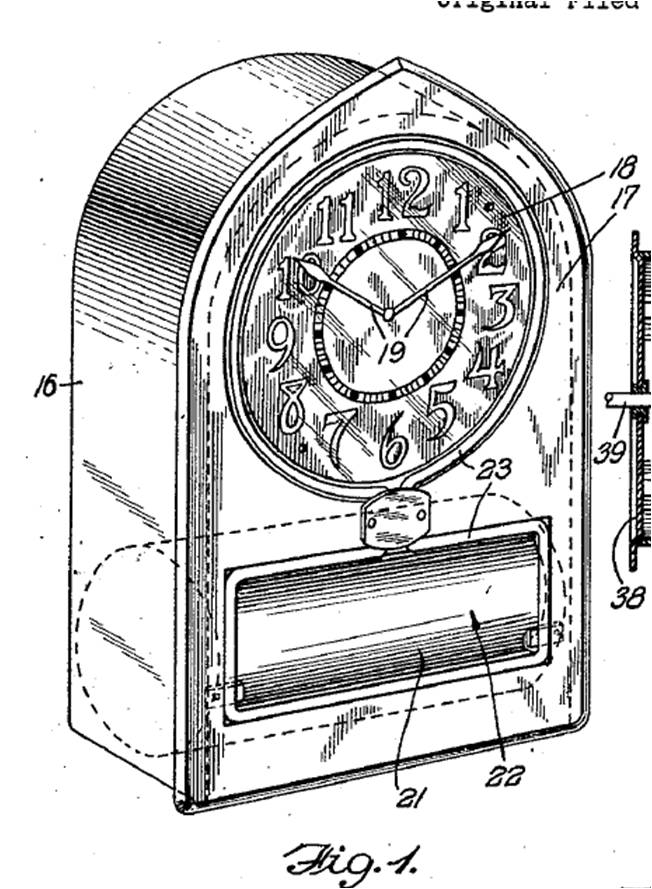 |
Patent 1898924, issued in 1933, is an improvement on the drum design, providing more details than in the previous submission. | ||
| Gallery of Electric Ad Clocks | |||
 |
 |
 |
 |
 |
This was a salesman's sample, in the carrying case. What an easy gig! Walk in. open the case, plug it in, and let the clock do all the talking! |
 |
|
 |
|
 |
|
| This flipper clock still has the labels on the back, the third one announcing that this is "The World's Only Revolving Ad Clock". | |||
 |
 |
 |
 |
| This clock has an unusual face and wood front piece. I can't assume this is original, but there are some tack or screw holes in the wood front that indicate something else had been on this clock at some point. |
This clock has the
manufacturer plate that reads "National Specialty Sales Company"
out of Brooklyn NY. |
||
 |
 |
 |
|
| The webmaster's favorite... rotating ads for Oostburg Plymouth (two-digit phone number), Daane Hardware has Stewart Stoves for "hot air hearing" stoves, and the best of all, "Cackle Egg Mash makes 'em cackle"! | |||
| Back to the Manufacturer page | |||